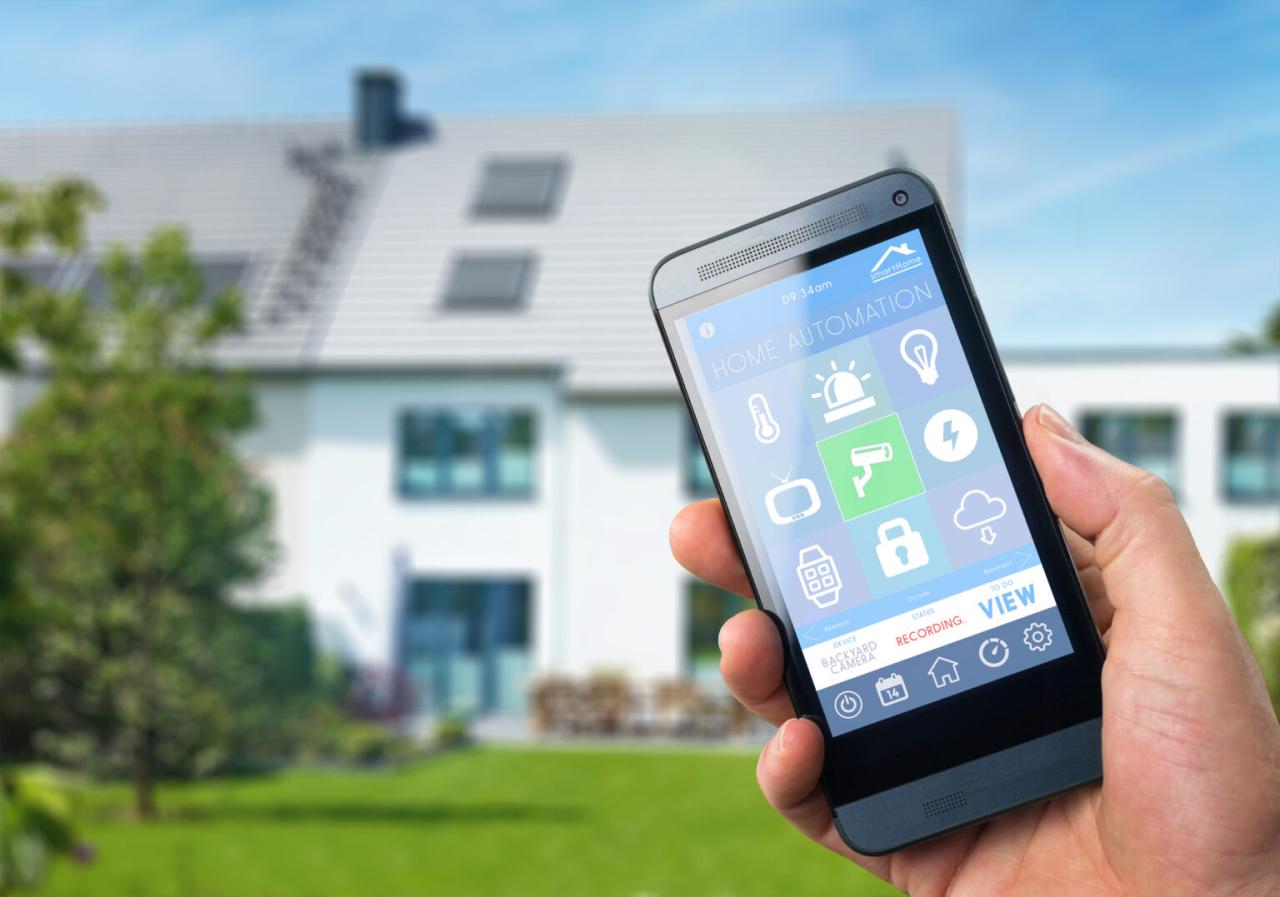Digital Security Insurance for Smart Home Owners: Safeguarding Your Connected Living Space

With the rise of smart homes, the need for digital security insurance has become paramount. As technology continues to advance, smart home owners face unique risks that traditional insurance may not cover. In this article, we will delve into the importance of digital security insurance for smart home owners and how it can provide peace of mind in an increasingly connected world.
Importance of Digital Security Insurance for Smart Home Owners
As smart home technology continues to advance, the need for digital security insurance has become increasingly crucial for smart home owners. Without proper insurance coverage, smart home owners face significant risks that could potentially compromise their privacy, security, and financial well-being.
Potential Risks Faced by Smart Home Owners
- Unauthorized access to sensitive personal data and information
- Hacking of smart home devices leading to privacy breaches
- Malware attacks targeting smart home systems
- Ransomware threats affecting smart home functionality
How Digital Security Insurance Provides Peace of Mind
Digital security insurance offers smart home owners the assurance that they will be financially protected in the event of a cyber-attack or data breach. This type of insurance can cover expenses related to restoring systems, recovering data, and addressing any legal liabilities that may arise.
With digital security insurance in place, smart home owners can have peace of mind knowing that they have a safety net in place to mitigate potential risks and safeguard their smart home investments.
Coverage Offered by Digital Security Insurance

Digital security insurance for smart homes typically includes the following types of coverage to protect homeowners from cyber threats:
Types of Coverage Included
- Cybersecurity Incident Response: This coverage helps homeowners respond to and recover from cyber attacks, such as malware infections or data breaches.
- Data Recovery and Restoration: In case of a cyber incident, this coverage helps in recovering and restoring lost or compromised data.
- Legal Support and Liability Protection: This coverage assists homeowners in legal matters related to cyber incidents, including liability protection for damages caused to others.
- Cyber Extortion Assistance: This coverage helps homeowners deal with cyber extortion attempts, such as ransomware attacks.
Cybersecurity Incidents vs Traditional Home Insurance
Traditional home insurance typically does not cover losses or damages caused by cyber incidents, as they are considered separate from physical property damage. Digital security insurance specifically addresses the unique risks associated with smart home devices and online threats, providing tailored coverage for cyber-related damages.
Filing a Claim for Digital Security Breaches
- Notify Insurance Provider: Contact your insurance provider as soon as you discover a digital security breach or incident.
- Provide Documentation: Gather evidence of the breach, such as logs, reports, and communications related to the incident.
- File a Claim: Submit a claim to your insurance provider, detailing the nature of the breach and the damages incurred.
- Investigation and Resolution: The insurance provider will investigate the claim and work towards resolving the issue, providing support and coverage as per the policy terms.
Factors to Consider When Choosing Digital Security Insurance
When selecting a digital security insurance provider for your smart home, there are several key factors that smart home owners should consider to ensure they have adequate coverage and protection against cyber threats.
Cost Comparison
- Compare the cost of digital security insurance with the potential financial losses that could result from cyber threats. It is essential to find a balance between affordable premiums and sufficient coverage to protect your smart home devices and personal data.
- Consider the deductible amount and any additional fees associated with the policy. Make sure to understand what is covered under the insurance and if there are any limitations or exclusions that could impact your coverage.
Policy Limitations
- Read the fine print of the insurance policy to understand the coverage limitations and exclusions. Pay close attention to any specific requirements or conditions that must be met to file a claim in case of a cyber incident.
- Ensure that the policy covers a wide range of cyber threats, including malware attacks, data breaches, identity theft, and other potential risks associated with smart home devices. Verify if the insurance provides coverage for both physical damages and financial losses resulting from cyber attacks.
Preventative Measures and Best Practices
In addition to having digital security insurance, smart home owners should also implement best practices to reduce the likelihood of cyber attacks. These proactive measures can not only enhance the security of your smart home but also impact your insurance premiums positively
Implement Strong Passwords and Multi-Factor Authentication
One of the simplest yet most effective ways to secure your smart home devices is by using strong, unique passwords for each device and account. Additionally, enabling multi-factor authentication adds an extra layer of security by requiring a second form of verification.
Regularly Update Software and Firmware
Ensure that all your smart devices have the latest software updates and patches installed. Outdated software can contain vulnerabilities that hackers can exploit to gain access to your devices and networks.
Network Segmentation and Firewall Protection
Segmenting your network can isolate smart devices from each other and your main network, limiting the impact of a potential breach. Installing a firewall adds an extra barrier between your devices and external threats.
Cybersecurity Education and Training
Investing in cybersecurity education and training for yourself and your family members can go a long way in preventing digital security incidents. Knowing how to identify phishing scams, secure your Wi-Fi network, and recognize suspicious activities can help you stay one step ahead of cybercriminals.
Emerging Trends in Digital Security Insurance for Smart Homes

As smart home technology continues to advance, the digital security insurance industry is also evolving to keep up with the changing landscape. Let's explore some of the emerging trends in digital security insurance for smart homes.
Integration of AI and Machine Learning
With the rise of artificial intelligence (AI) and machine learning, insurance companies are leveraging these technologies to better assess risks and personalize coverage for smart home owners. By analyzing data from connected devices, AI can help predict potential security vulnerabilities and offer proactive solutions to mitigate risks.
Cybersecurity Partnerships
Insurance providers are increasingly forming partnerships with cybersecurity firms to enhance their digital security insurance offerings. These collaborations allow for the development of comprehensive security solutions that combine insurance coverage with advanced cybersecurity measures, providing smart home owners with a more holistic approach to protection.
Dynamic Pricing Models
Advancements in technology have enabled insurance companies to implement dynamic pricing models based on real-time data from smart home devices. By monitoring usage patterns and security alerts, insurers can adjust premiums accordingly, rewarding proactive security measures taken by homeowners.
Expansion of Coverage Options
As the risks associated with smart home technology evolve, digital security insurance providers are expanding their coverage options to address new threats. From protection against IoT device hacking to coverage for data breaches, smart home owners now have access to a wider range of insurance policies tailored to their specific security needs.
Focus on Education and Awareness
Another emerging trend in digital security insurance is the emphasis on educating smart home owners about cybersecurity best practices. Insurance companies are providing resources and guidance to help homeowners understand potential risks and take proactive measures to secure their connected devices, ultimately reducing the likelihood of cyber incidents.
End of Discussion

In conclusion, digital security insurance offers a crucial layer of protection for smart home owners, ensuring that their connected living spaces are safeguarded against cyber threats. By understanding the coverage options, factors to consider, and emerging trends in this industry, smart home owners can make informed decisions to protect their digital assets effectively.
Query Resolution
What risks do smart home owners face without digital security insurance?
Smart home owners risk financial losses, privacy breaches, and device manipulation without proper insurance.
How does digital security insurance differ from traditional home insurance?
Digital security insurance specifically covers cyber threats and breaches that are not typically included in traditional home insurance policies.
What are some preventative measures smart home owners can take to reduce cyber attacks?
Implementing strong passwords, regular software updates, and network monitoring can help reduce the likelihood of cyber attacks.

